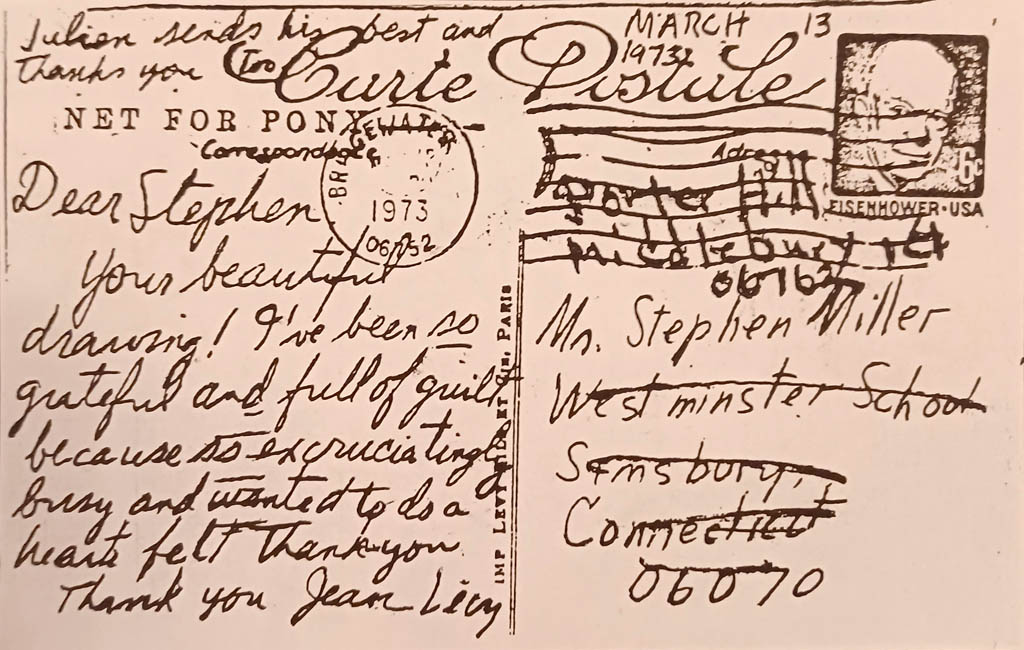|
|
home | artists | artworks | bookstore | features | guestbook | about us |
Stephen Robeson-Miller |
return to artist home page |
Dr. Katherine Conley wrote on Apr 14, 2022 about By the Skin of My Teeth: Stephen Robeson-Miller's work on paper By the Skin of My Teeth (2020), carries echoes of Andre Breton's "Great Transparent" ones, beings that you can intuit more than see, but who are nevertheless real. Breton wrote about these transparent beings while taking refuge in New York during World War Two, at a moment of worldwide vulnerability. Robeson-Miller's work, in such an analogous time of vulnerability, consequently carries particular resonance. |
Paul B. Franklin wrote on Apr 11, 2021 about Sibling Rivalry: Like love and hate, sibling rivalry is a universal human sentiment that has both fired and enflamed relations between individuals since time immemorial. Take the Egyptian fable of Osiris and Set, the Hebrew stories of Cain and Abel and Leah and Rachel, the Roman tale of Romulus and Remus, or Sophocles's Antigone and Ismene. In his 2017 painting Sibling Rivalry, Stephen Robeson-Miller compellingly extends this epic yet everyday narrative by dint of a visual vocabulary indebted as much to surrealism as to ancient mythology. When I first encountered Sibling Rivalry, its subject immediately resonated with me. As the twelfth child of seventeen - ten boys and seven girls raised by the same parents - I am particularly attuned to the topic. The two grotesque personages at the center of Sibling Rivalry are flayed, stripped bare physically and psychologically. Their bodies, composed of skeletal and muscular forms rendered in a nuanced palette of flesh tones, are indistinguishable, even indivisible. At once human and monstrous, these figures are veritable mirror images of one another, twins perhaps, like Castor and Pollux or Helen of Troy and Clytemnestra, an impression underscored by the serpentine subterranean umbilical-like cord that conjoins their lower extremities. With their mouths agape in anguish or passion, these siblings desperately, violently strive to break free from one another, a metaphor for the raw emotional journey that every human being undertakes in hopes of establishing and imposing his or her independent identity. Competition between siblings is also inevitably a struggle with one's self. As such, Sibling Rivalry reminds me of Max Ernst's iconic canvas The Angel of Hearth and Home, or The Triumph of Surrealism (1937). The titles of these two paintings evoke decidedly familial, domestic phenomena, which both artists strategically examine in an allegorical manner, juxtaposing beastly figures in barren landscapes with mountains punctuating the horizon. In his Second Manifesto of Surrealism (1930), André Breton announced: "Everything remains to be done, every means must be worth trying, in order to lay waste to the idea of family, country, religion." Even though such a call to arms was grounded in the revolutionary potential of surrealism, Sibling Rivalry reminds us that our past, especially the bond of blood, invariably conditions both the present and the future, whether real or surreal. |
Whitney Chadwick wrote in 2008: Stephen Robeson-Miller's recent oil paintings and drawings fuse lyricism with an exquisite draftsmanship. Pulsing with energy, his hybrid configurations oscillate between the organic and the abstract, between plant formations and skeletal frameworks. Forms twist and turn in space as flowing lines create rhythmic patterns that summon forth shifting and interlocking fields of energy. The Battle of San Romano [after Uccello], 2008, renders the exuberant energy of Uccello's early Renaissance masterpiece as a graphic abstraction in which linear elaboration maps the psychic forces unleashed by the artist's unconscious. The Silent Drama (Act II, Scene I), 2008, and related drawings, reinforce these links between entangled forms and the functioning of the human psyche. French poet Andre Breton, the founder of Surrealism, once observed that what interested him about painting lay not in its reproduction of external reality, but in its ability to open a window onto the inner world. Robeson's art extends the search for the point at which the two meet. |
Francis V. O'Connor wrote in 2003: I like the development over the years of Stephen Robeson's "rope pictures" - for lack of a better term - into tighter and tighter knots. Such entanglements are intriguing, like trying to figure out Jackson Pollock's "pourings". There is much to be said that the Surrealist tradition has, in its ever-viable method of pure psychic automatism, permitted Robeson to create new and personal forms. |
Martica Sawin wrote on Dec 21, 1999 about The Oracle: I really like the way the way you have treated the head [inspired by a profile photograph of Victor Brauner in Marcel Jean's History of Surrealist Painting] so that it functions on several levels: effective on a formal or plastic basis with its linear rhythms and tonal contrasts and at the same time a kind of cat scan of the brain. Some of it looks like etching and some of it looks engraving, reminiscent of Hayter's mixtures. |
Jean Levy wrote in 1973 about Snob Construction (1972): 
|
|
Gallery of Surrealism 160 Bleecker Street, #10ME, New York, NY 10012 tel 212.227.9322 info@surrealism.gallery Copyright © Gallery of Surrealism. All rights reserved. All images copyright of the artist. All text, descriptions, and images on this site are copyrighted and may not be reproduced or distributed in any way without express written permission. The availability and price of all items illustrated and/or listed on this site are subject to change without notice. |